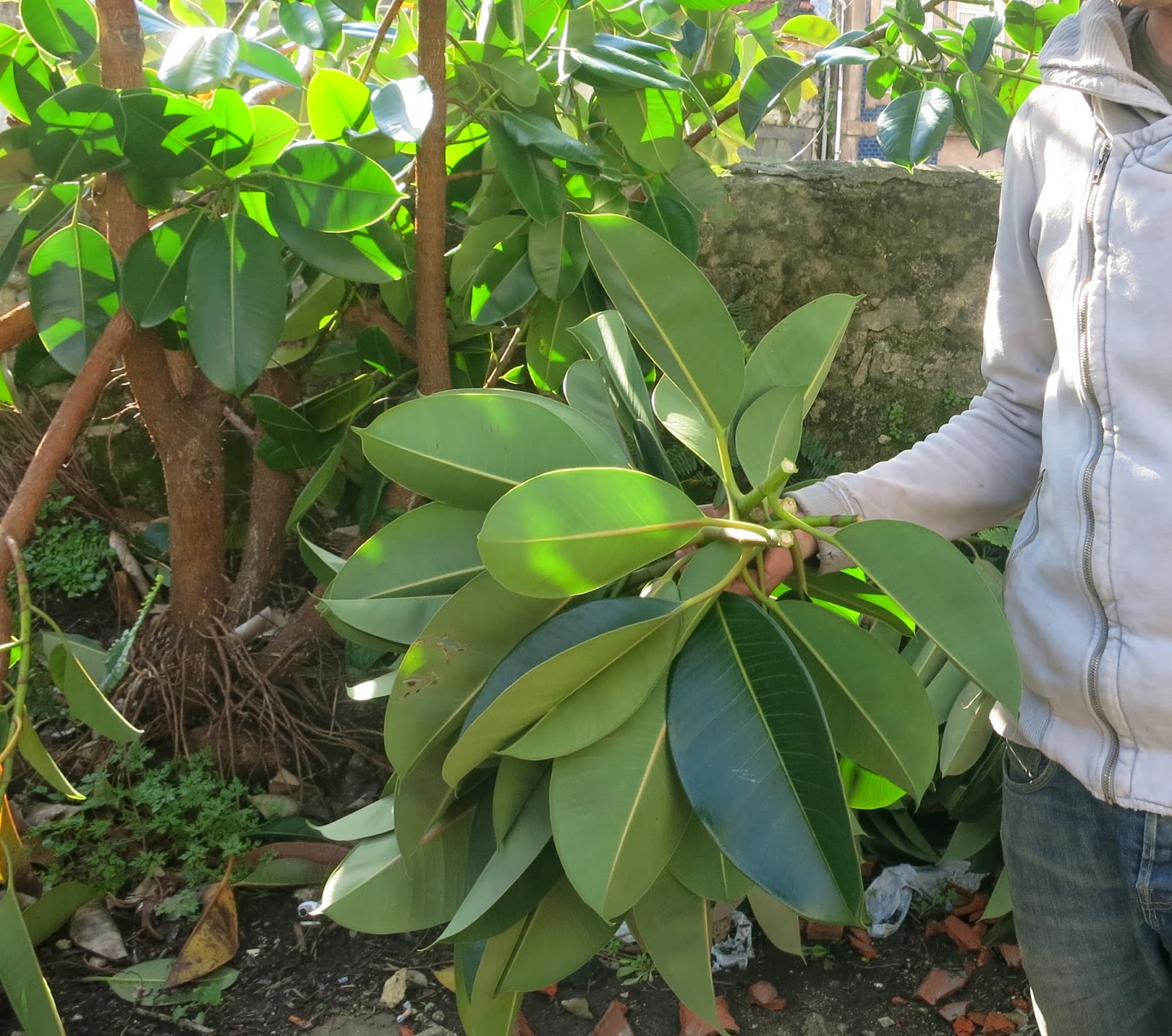One of the main reasons for selecting this house was the amazing south facing garden. The climate in Porto is so pleasant that most of the year, people will want to be outside. Therefore, having a good garden space was an early requirement for us. In Porto, gardens are common in many of the newer old neighborhoods (19th century), they are less common in the more ancient/medieval parts of the city.
Of course, in it's current condition, the garden doesn't look like much. The last owner of the house paved it over with concrete (illegally), added an illegal workshop structure, and then a very aggressive rubber plant took over... concrete be damned!
 |
| Yes, one plant... really ONE plant! |
Rubber plants (
Ficus Elastica) are incredibly hardy things. Given the right conditions, they can grow to be massive trees, and the 'right conditions' are very flexible. No water, no sunlight... NO PROBLEM (generally speaking). Most plants would give up rather than try to grow on top of impenetrable concrete... but rubber plants don't give a fuck! Ours just spread out his roots horizontally across the top of the concrete.
Our original goal was to keep our plant, of course his wild growth needed to be tamed, but rubber plants are really beautiful things, and he was holding down the fort long before we arrived on the scene. We even named him; 'Homeboy'. Unfortunately, city regulations set strict limits on impenetrable coverage and we are required to remove all the concrete (which had been laid illegally) under Homeboy. Hardy as he is (original gangsta' really), there is no way he will survive the process.
But there is a way to keep him. Homeboy will be saved or at least, propagated into little clone Homboyz! Rubber plants can be propagated though cuttings in addition to sprouting from seeds, so today, I collected a few.
Propagating plants from cuttings is not difficult, but this is my first attempt so I spent some time on the internet and spoke with the guys at the local gardening shop.
 |
| Tools of the trade |
Although there are methods that don't require it, most sources I saw suggested using the
'rooting hormone' Auxin. I've read before how plants regulate their growth activities and even communicate with other plants using hormones. It's quite fascinating really, and particularly impressive that we have isolated the exact chemical compounds that plants use to do it.
 |
| Portuguese rooting hormone |
Anyway, the process is pretty simple, you cut the plants below a leaf segment, dip the cut edge in some of this funky hormone stuff, and then plant it into very moist place (or directly into water, I'm trying both ways) until the roots start to sprout. You can also spur the process along by pruning the leaves in half so the plant gets the impulse to regenerate the damaged ends.
I'll keep you posted on the progress of our 5 little Homeboyz. I really hope we get at least one rooting plant to keep beat alive!






